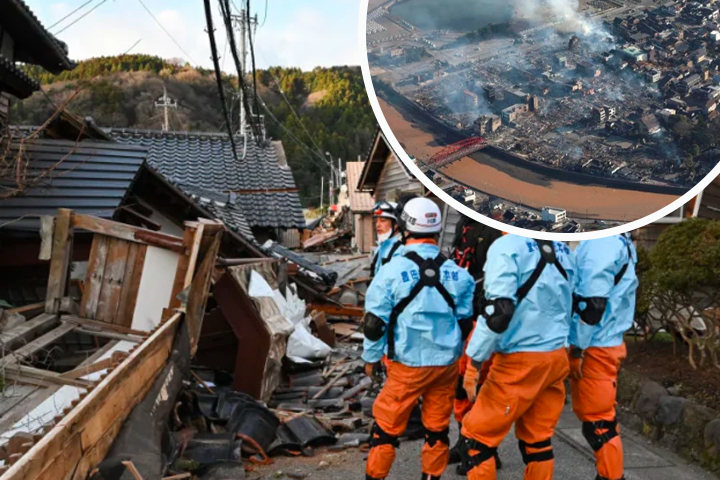


Japan, which is located in one of the world's most seismically active regions, has just been placed on high alert. Even for a nation used to such natural calamities, megathrust earthquakes, about which scientists are increasingly concerned, pose a distinct kind of threat.
A natural disaster of this size might destroy the nation's infrastructure and cause ripple effects via international semiconductor supply networks, in addition to the unquestionably catastrophic human element. This vulnerability is a worldwide worry in addition to a national one due to the nation's pivotal role in the global tech industry.
“Nankai megathrust earthquakes,” which take place along the fault line under the Nankai Trough—a major tectonic boundary off southern Japan—have occurred only nine times in the past 1,400 years, each time registering a magnitude of 7.2 to 8.0.
In the wake of such a devastating earthquake, the interruption of Japan's semiconductor sector would have worldwide implications. Japan is a major producer of semiconductors as well as the specialized machinery required to make them. The COVID-19 epidemic brought to light the fundamental need of these parts, and the scarcity of semiconductors that followed brought to light how essential they are for powering everything from vehicles to cellphones.
A large-scale interruption may cause a global shortage, which would have a disastrous effect on economies and industries everywhere.
According to the Semiconductor Industry Association, a Washington-based trade association, Japan possesses over 90% of the manufacturing equipment used to create circuits on wafers and over 50% of wafer production, despite making up only 15% of the global semiconductor value chain.
The most recent alert was issued in response to recent seismic activity in Miyazaki Prefecture, a rural area bordering the Pacific Ocean on Kyushu's eastern coast in southern Japan.
Strong earthquakes often strike Miyazaki, which lies close to the Nankai Trough. Large-scale earthquakes in Miyazaki frequently suggest stress accumulation along linked fault lines, which may be a precursor to the bigger, more catastrophic Nankai earthquake. Because Miyazaki's seismic activity has historically preceded significant earthquakes in the Nankai region, scientists are concerned about potential large-scale disasters in the future.
“It’s like Russian roulette; the bullet is already in the chamber,” said Toshiyasu Nagao, head of the Earthquake Prediction Research Centre at Tokai University, warning of an imminent megaquake. “It may not have come out this time, but it could be the next one or the one after that. A megaquake could strike in the 2030s, and it’s almost inevitable by the 2040s or 2050s.”
A 7.1-magnitude earthquake that struck the area on August 8 caused at least 53 residential buildings to be destroyed and caused many injuries. The earthquake caused disruptions to vital services, such as water supply, underscoring the vulnerability of infrastructure against such natural disasters.
Because of this, Japan issued its first-ever megaquake advisory on August 8, telling people to check their evacuation preparations and get ready for possibly stronger shocks.
Japanese Prime Minister Fumio Kishida made the historic decision to postpone his August 9–12 visit of Central Asia because to the growing danger. He justified the cancellation by saying that his primary priority at the moment is to “ensure that the government’s response and information dissemination are in order.”
Records for about 1,400 years show that the Nankai Trough has caused some of the most catastrophic earthquakes in Japanese history. Usually, these occurrences take place every 150 to 200 years. There may be another significant earthquake nearby; the previous one was noted in 1946.
Professor Takashi Yokota of Aichi Institute of Technology and a member of the Nankai Trough Earthquake Evaluation Review Committee pointed out that the recent 7.1-magnitude earthquake may have sent off following quakes as strong as 8.
As per a 2012 Japanese government study, the most deadly outcome of such an earthquake might be a tsunami, with waves as high as thirty meters in certain regions. Up to 323,000 people might die as a result of this, forcing up to 9.5 million people to evacuate. Roughly 70% of the estimated deaths are expected to be caused by tsunamis.
Residents near the Nankai Trough may have virtually no time to respond before the tsunami strikes, according to Nagao, in contrast to the 20 to 25 minutes of lead time individuals had following the 2011 Tohoku earthquake. According to simulations, it might take three minutes for waves as high as three meters to reach certain coastal locations.
Government estimates suggest that the economic consequences of a Nankai megathrust earthquake might be as high as $1.5 trillion, with significant implications for both Japan's economy and the worldwide IT scene. This amount, which amounts to around 37% of Japan's GDP in 2023, is far more than the losses incurred by the earthquake in 2011.
Professor of engineering at Kyoto University Satoshi Fujii issued a warning, describing the aftermath as a "true national calamity" that might "depress Japan's economy for 20 years."
Because of its crucial position in the worldwide semiconductor supply chain, the effects of a calamity of this magnitude would be felt well beyond Japan's boundaries. This vulnerability was made clear by the 2011 earthquake, which caused months of disruption to the world's car manufacturing due to a damaged semiconductor facility in Ibaraki Prefecture. This plant was essential for producing microcontrollers for automobile engines, which accounted for a sizeable share of the worldwide market.
The nation canceled the megaquake alert as of mid-August, when no more significant seismic activity was found. But the impending danger is a sobering reminder of the precarious equilibrium that exists between the laws of nature and the intricate workings of contemporary business.